Conservation agriculture for smallholder maize farmers in Jharkhand, India
Farming in Jharkhand in eastern India is typically characterized by land degradation, moisture stress, low cropping intensity, poor biomass production, and low farm income. To address these issues faced largely by smallholder farmers, a conservation agriculture (CA) project was initiated in 2011 by CIMMYT in collaboration with Birsa Agricultural University (BAU) and Ranchi and Krishi Vigyan Kendras (KVKs), with support from the International Fund for Agricultural Development (IFAD). A stakeholder consultation/field day was organized on 8 October 2012 jointly by CIMMYT and BAU at Ranchi, Jharkhand, to demonstrate the benefits of CA in sustainable intensification. The event was attended by over 150 participants, including the vice chancellor and other key officers of BAU, CIMMYT scientists, and farmers from three districts of Jharkhand. In addition, representatives from three private companies attended the field day to showcase their latest products and to discuss their support for scalingup seed production of existing commercial and advanced hybrids.
SP Poonia, CIMMYT scientist based at Ranchi, provided an overview of activities and progress of the IFAD “Sustainable Intensification of Smallholder Maize-Livestock Farming Systems in Hill Areas of South Asia” project. Poonia shared salient achievements on sustainable intensification of maize systems using CA-based crop management technologies, and on quality protein maize performance. Raj Gupta from CIMMYT-India stressed that farmers can produce more yield under CA with less supplemental irrigation. He further emphasized that farmers need to consider mechanised farming to ensure timely planting and to realize the full potential of available resources on a sustainable basis.
Ken Sayre from CIMMYT-Mexico appreciated the farmers for efficient adoption of CA within one year since the launch of the project. He then focused on relations between farmers and researchers to enhance knowledge sharing and appreciated the cooperation and vast presence of BAU officials, private sector representatives, and farmers, demonstrating a strong partnership aiming to help the farmers. Sayre also shared his experience with CA-based crop management technologies from Mexico and elsewhere. R.P. Singh Ratan, BAU Extension Director, added that seed companies form a vital link in delivering improved maize varieties to farmers. They are also crucial in training local mechanics and making need-based corrections to CA machineries. He further added that CA techniques are indispensable for conserving natural resources. MP Pandey, Vice Chancellor of BAU and chief guest of the event, appreciated farmers’ feedback on CA-based technologies. He then applauded the CIMMYT and BAU teams for their work both on station and on farmers’ fields in remote areas. He assured his full support for further scaling out of CA-based technologies in the state to achieve more efficient management of natural resources. The event was followed by a field visit and in-field interactions. Officials present at the event included DK Singh ‘Dron’ (ADR, BAU), R Thakur (Chairman of Agronomy), ZA Haider (Chairman of PBG), and other eminent scientists from BAU.
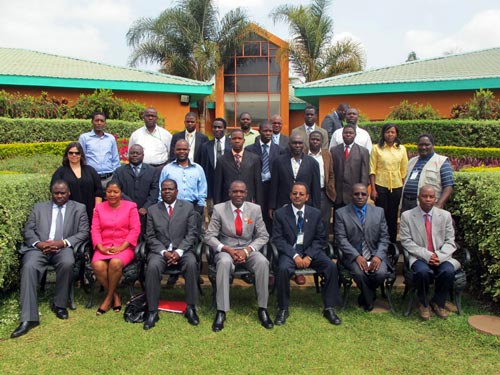
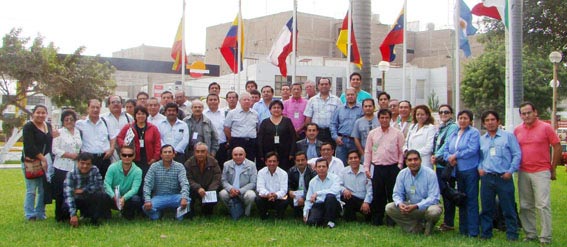
 While cereal production in India has increased significantly since the mid-1960s as a result of the Green Revolution, securing the gains achieved is becoming more difficult in the context of soaring food and fuel prices, volatile markets, depleting water resources, soil degradation, and the effects of global climate change. To discuss strategies for improving efficiency and resilience of farming systems as a way to ensure sustainable food security, over 400 participants gathered for an in-field stakeholder meeting on ‘Empowering Farmers for Climate Smart Agricultural Practices in Haryana’ in Taraori, Karnal, India, on 28 September 2012. The event was organized by the CGIAR Research Program on Climate Change, Agriculture and Food Security (
While cereal production in India has increased significantly since the mid-1960s as a result of the Green Revolution, securing the gains achieved is becoming more difficult in the context of soaring food and fuel prices, volatile markets, depleting water resources, soil degradation, and the effects of global climate change. To discuss strategies for improving efficiency and resilience of farming systems as a way to ensure sustainable food security, over 400 participants gathered for an in-field stakeholder meeting on ‘Empowering Farmers for Climate Smart Agricultural Practices in Haryana’ in Taraori, Karnal, India, on 28 September 2012. The event was organized by the CGIAR Research Program on Climate Change, Agriculture and Food Security (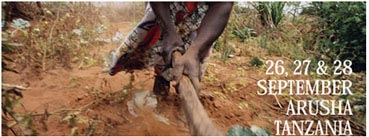 “We have arrived at the tipping point and are not taking Africa’s Green Revolution to scale,” said Kofi Annan during the opening session of the 2012 African Green Revolution Forum which took place in Arusha, Tanzania, from 26-28 September. The forum gathered 1,000 participants from ministries of agriculture, industry, and the international donor community. CIMMYT was represented by Wilfred Mwangi. Melinda Gates of the Bill & Melinda Gates Foundation (
“We have arrived at the tipping point and are not taking Africa’s Green Revolution to scale,” said Kofi Annan during the opening session of the 2012 African Green Revolution Forum which took place in Arusha, Tanzania, from 26-28 September. The forum gathered 1,000 participants from ministries of agriculture, industry, and the international donor community. CIMMYT was represented by Wilfred Mwangi. Melinda Gates of the Bill & Melinda Gates Foundation (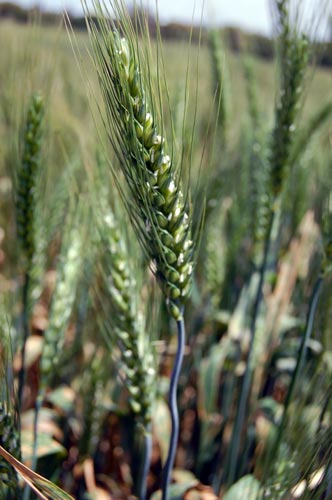 It was another exhausting, but productive day at the Wheat for Food Security in Africa conference at Addis Ababa, culminating in a wonderful evening of traditional dancing and the Injera cuisine so typical of Ethiopia. In case you missed any of our live tweeting during the day (#W4A), here is a brief roundup of the main events. It would be impossible to describe everything that happened in one short post, but this was a day likely to produce impacts in the months to come.
It was another exhausting, but productive day at the Wheat for Food Security in Africa conference at Addis Ababa, culminating in a wonderful evening of traditional dancing and the Injera cuisine so typical of Ethiopia. In case you missed any of our live tweeting during the day (#W4A), here is a brief roundup of the main events. It would be impossible to describe everything that happened in one short post, but this was a day likely to produce impacts in the months to come.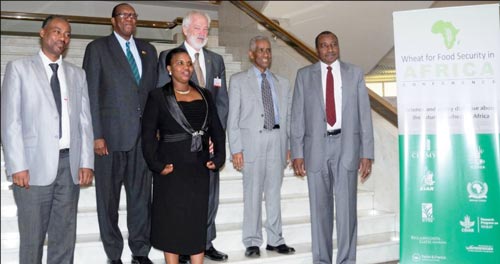
 After two days in
After two days in 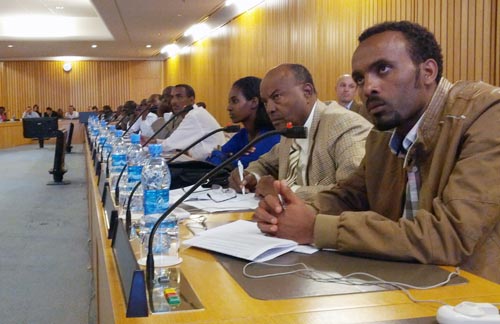 An exhausting, productive day on Day Two of Wheat for Food Security in Africa. Participants arrived bright and early for expert presentations and round-table discussions on abiotic/biotic stresses, market and seed systems, wheat systems and quality, and country outlooks.
An exhausting, productive day on Day Two of Wheat for Food Security in Africa. Participants arrived bright and early for expert presentations and round-table discussions on abiotic/biotic stresses, market and seed systems, wheat systems and quality, and country outlooks.
 Longer periods of drought and erratic and below-average rainfall in western Kenya have been making farming increasingly difficult over the years. In combination with declining soil fertility and deep-rooted practices of low-farm input application, agricultural productivity in the region has been on steep decline, leaving many farmers desperately staring at famine. However, with introduction of conservation agriculture (CA) via the Sustainable Intensification of Maize-Legume Cropping Systems for Food Security in Eastern and Southern Africa (
Longer periods of drought and erratic and below-average rainfall in western Kenya have been making farming increasingly difficult over the years. In combination with declining soil fertility and deep-rooted practices of low-farm input application, agricultural productivity in the region has been on steep decline, leaving many farmers desperately staring at famine. However, with introduction of conservation agriculture (CA) via the Sustainable Intensification of Maize-Legume Cropping Systems for Food Security in Eastern and Southern Africa (